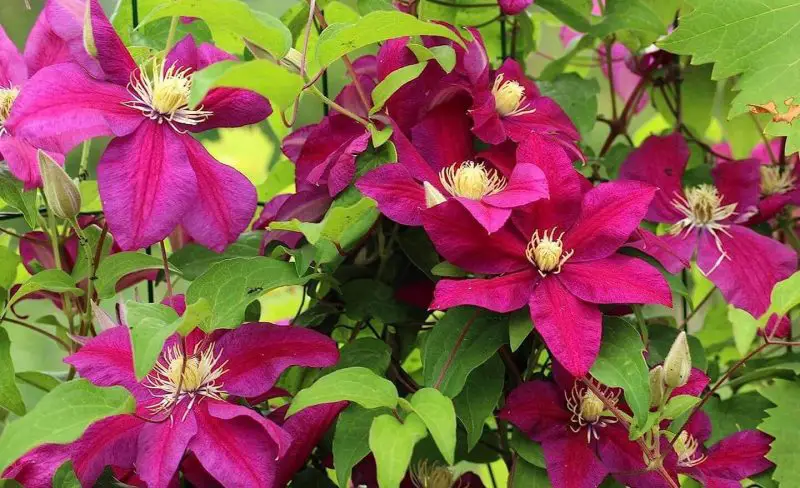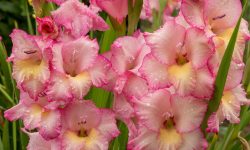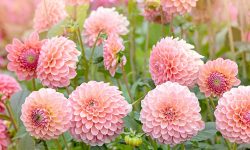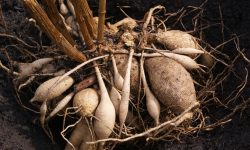Clematis is one of the most enchanting flowering vines in any garden. Its elegant petals climb walls, trellises, and fences with effortless grace. Each blossom seems to glow in sunlight, painting the garden with color and life. But even the most stunning clematis needs nourishment to reach its full beauty. Fertilizing at the right time helps the plant develop stronger roots, greener leaves, and more abundant blooms. Many gardeners wonder when to fertilize clematis and how to do it properly. The timing and type of fertilizer make all the difference between weak growth and breathtaking flowers.
This guide will show you everything you need to know about feeding clematis correctly. You’ll learn when to start, how often to apply fertilizer, and which nutrients matter most. We’ll also explore seasonal feeding techniques and expert care tips for long-lasting blooms. Clematis rewards attention with growth that seems almost magical. Once you master the rhythm of fertilizing, your vines will transform into a cascade of vibrant color. Beautiful blooms come from balanced care, and this article will help you achieve that harmony step by step.
Understanding Clematis Growth and Nutrient Needs

Clematis is a climbing perennial that grows with both grace and determination. Its roots stretch deep into the soil, anchoring firmly while drawing nutrients from below. Above ground, the vines reach toward sunlight, producing countless leaves and flowers. This balance between strong roots and vigorous top growth depends heavily on nutrition. Without proper feeding, clematis grows slowly and produces fewer blooms. Its leaves may fade to pale green, and flowering can stop altogether. A healthy plant shows glossy foliage and continuous growth throughout the season.
The nutrient needs of clematis change as it matures. Young plants focus on root development and need extra phosphorus for strength. Mature plants require nitrogen for foliage and potassium for flowers. Balanced fertilization keeps the plant healthy year after year. Organic compost enriches the soil naturally, while slow-release fertilizer provides steady nourishment. Overfeeding, however, can harm the roots and reduce flowering. Understanding what your clematis needs during each stage ensures healthy growth and a steady bloom cycle.
Different varieties respond to feeding in slightly different ways. Large-flowered types bloom heavily and need more energy. Smaller or late-flowering clematis grow slower but benefit from steady feeding through the season. Watching your plant closely helps you understand its signals. Deep green leaves and new shoots mean balanced nutrition, while weak stems suggest a nutrient gap. Knowing your plant’s rhythm and responding to its needs will bring you stronger vines, longer blooms, and a clematis that thrives season after season.
When to Fertilize Clematis Throughout the Year
Fertilizing clematis at the right time keeps the plant growing strong from spring to fall. The first feeding should happen in early spring as new shoots begin to appear. At this stage, the plant wakes from dormancy and needs energy to start growing again. Use a fertilizer rich in nitrogen and phosphorus to promote strong roots and lush green foliage. Apply it around the base of the plant, keeping the soil moist but not soggy. This early feeding sets the foundation for healthy vines and future blooms.
The second feeding comes in late spring or early summer when buds begin to form. During this period, clematis shifts its focus from growth to flowering. Switch to a balanced fertilizer that includes more potassium to support bud development. This nutrient improves both color and longevity of the blooms. Consistent watering after fertilizing helps nutrients move through the soil efficiently. Avoid feeding during extreme heat, as the roots absorb less during stress. Timing this mid-season application correctly ensures abundant, vibrant flowers.
In late summer, provide one final light feeding to strengthen the roots for next year. Choose a mild organic fertilizer or compost mix. This gentle nourishment helps the plant store energy before going dormant. Avoid heavy feeding in late fall, as new growth may freeze during early frosts. Proper timing through each season maintains steady health, stronger vines, and reliable blooms. A consistent fertilizing rhythm creates a clematis that thrives and blossoms more beautifully with every passing year.
Choosing the Right Fertilizer for Clematis
Organic Fertilizers for Long-Term Soil Health
Organic fertilizers nurture clematis from the ground up by improving soil quality naturally. Compost, aged manure, or worm castings release nutrients slowly and safely. They feed beneficial microbes, helping the soil breathe and retain moisture. These fertilizers also balance pH levels, making nutrients easier for roots to absorb. A two-inch layer of compost around the base in early spring encourages early growth. Repeat after the main flowering period to recharge the soil for another flush of blooms. Healthy soil means a healthy clematis with lasting vitality.
Organic feeding offers steady nourishment without chemical stress. It also builds long-term fertility that benefits future plantings. Over time, you’ll notice deeper roots, stronger stems, and longer flowering periods. Organic fertilizers may not produce instant results, but they strengthen the plant’s natural rhythm. They create resilience against disease and temperature fluctuations. If you want a sustainable garden with life-rich soil, organics provide that foundation. Clematis fed organically rewards you with more consistent color, thicker vines, and flowers that glow through every season.
Synthetic Fertilizers for Quick Growth
Synthetic fertilizers deliver fast, concentrated nutrition when clematis needs an energy boost. They contain precise ratios of nitrogen, phosphorus, and potassium for balanced growth. A formula such as 10-10-10 or 15-15-15 ensures strong foliage and vibrant flowers. Because they dissolve quickly, the plant absorbs nutrients almost immediately. This rapid response helps struggling clematis recover faster from stress or pruning. Apply diluted fertilizer once or twice monthly during active growth, especially in spring and early summer. Consistent feeding maintains lush greenery and continuous blooming cycles.
Still, too much synthetic fertilizer can harm more than help. Overuse builds up salts that damage roots and alter soil structure. Always water deeply after application to flush extra minerals. Combine synthetic fertilizer with compost or mulch to protect soil health. This hybrid method gives you the quick benefits of chemicals and the lasting stability of organics. Gardeners who observe closely and feed moderately enjoy healthy, vigorous plants. Synthetic feeding requires precision, but with care, it transforms clematis into a strong, reliable showpiece each year.
Liquid vs. Granular Fertilizers
Both liquid and granular fertilizers have unique strengths for feeding clematis. Liquid fertilizers act fast, making them perfect for quick recovery after stress or transplanting. They mix easily with water, allowing nutrients to reach the roots instantly. Apply every two weeks during active growth for consistent color and leaf health. Granular fertilizers release nutrients slowly, providing steady feeding that lasts up to two months. They’re ideal for busy gardeners who prefer fewer applications but still want strong results.
For best performance, use liquid fertilizer early in spring when growth starts. Switch to granular formulas in midsummer to support flowering and root stability. This rotation gives clematis continuous nourishment through all stages. Avoid applying fertilizer on wet leaves, as it may cause burns or disease. Always water well after feeding to move nutrients deeper into the soil. Understanding how each form works helps you adapt feeding to your plant’s rhythm. When used correctly, both types create powerful, blooming vines that flourish all season long.
How to Fertilize Clematis Step by Step
Fertilizing clematis starts with preparing the soil correctly. Loosen the top few inches around the base so nutrients can travel easily. Remove weeds and debris that may block water flow. Water the soil slightly before applying fertilizer to avoid root shock. Spread the fertilizer evenly in a circular pattern about six inches from the main stem. Keep fertilizer away from direct contact with roots or stems. After spreading, water thoroughly again to help nutrients dissolve and reach deeper layers. Gentle watering prevents fertilizer burn and promotes even absorption across the root zone.
Consistency is key during the growing season. Young clematis plants need light feeding every three weeks until midsummer. Mature vines grow best with stronger feedings about once a month. Observe leaf color closely to adjust nutrient balance. Pale leaves often indicate nitrogen shortage, while dull flowers signal low potassium. Switch to bloom-specific fertilizer once buds appear for more vibrant color and longer-lasting blooms. Always fertilize when the soil is moist, never dry. Moisture helps distribute nutrients evenly without harming the roots. Deep watering after feeding strengthens the plant’s overall health.
After flowering, provide one last gentle feeding before dormancy. Use compost, worm castings, or a mild, low-nitrogen fertilizer. This final meal helps the plant store energy in its roots for winter. Avoid heavy feeding in fall, as new growth might freeze during early frosts. A clear, steady routine ensures clematis grows with resilience and vigor. By following each step with patience, you’ll encourage continuous blooms and lush, healthy vines every year.
Signs Your Clematis Needs Fertilizer
Clematis communicates its nutrient needs through visible signs. When leaves turn pale green or yellow, the plant likely lacks nitrogen. Slow growth and thin stems indicate a shortage of phosphorus. Fewer buds or small flowers suggest potassium deficiency. These symptoms often appear after long rain periods or poor soil drainage. Observing these details early helps you act before the plant weakens. Always evaluate the soil and watering routine first before applying fertilizer again.
Mid-season nutrient drops are common in clematis grown in containers or sandy soil. If the plant looks tired or wilts quickly, it may need extra feeding. Apply a diluted, balanced fertilizer around the roots and water deeply. This quick boost revives growth and restores healthy color within weeks. Avoid feeding during high heat or drought because roots absorb poorly under stress. Gentle correction at the right time brings faster recovery and stronger flowers.
Another clear sign is delayed or reduced blooming. Clematis that once bloomed heavily but now struggles likely suffers from nutrient imbalance. Renew the soil with compost or organic matter before adding fertilizer. This combination helps nutrients penetrate better and encourages root activity. Recognizing these early signals saves your plant from long-term decline and ensures continuous, radiant blooms all season.
How Weather and Climate Affect Clematis Fertilizing Schedule
Weather plays a key role in determining when and how to fertilize clematis. In cooler climates, the soil warms slowly, delaying nutrient absorption. Fertilizing too early can waste nutrients and cause poor growth. Wait until consistent warmth arrives before the first application. In hot regions, high temperatures reduce the plant’s ability to absorb nutrients through the roots. During intense heat, clematis often enters partial dormancy. Feeding heavily at this time can stress the plant rather than help it. Timing feeding based on temperature keeps growth steady and balanced.
Humidity and rainfall also affect fertilizer performance. Excess rain washes nutrients away before the roots can absorb them. In wet seasons, use slow-release fertilizers that stay stable in the soil longer. In dry regions, moisture is the key to efficient feeding. Always water thoroughly before and after fertilizing to activate nutrients. Balanced hydration helps the soil carry minerals evenly. Ignoring moisture conditions often leads to wasted fertilizer and weak plants.
Seasonal transitions demand adjustments too. During cool, damp springs, reduce feeding frequency to prevent overgrowth. In long, hot summers, feed sparingly and focus on potassium-rich fertilizers that build endurance. Climate-based adjustments prevent stress and keep clematis strong year-round. Understanding your local weather helps you create a fertilizing rhythm that matches your environment. When you feed with the climate instead of against it, your clematis grows in harmony with nature and rewards you with healthier, longer-lasting blooms.
Seasonal Fertilizing Guide for Clematis
Spring: Waking Up and Feeding for Growth
Spring marks the most important stage for clematis feeding. As the soil warms and new shoots appear, the plant needs energy to rebuild strength. Use a balanced fertilizer with higher nitrogen and phosphorus to stimulate roots and leafy growth. Always water the soil first to avoid fertilizer shock. Sprinkle the fertilizer evenly around the root zone, keeping several inches away from the main stem. Afterward, water deeply again to help nutrients move through the soil. Adding compost or mulch helps regulate moisture and keeps roots cool as growth accelerates.
Feed again three or four weeks later as shoots lengthen. This second feeding keeps nutrient levels steady and promotes thicker vines. If you grow large-flowered varieties, choose a formula with added potassium to support strong buds. Check for uniform growth and prune weak stems early. Early fertilizing shapes the entire season’s success. Consistent feeding through spring builds lush, healthy vines that respond with vigorous climbing and prepare for brilliant summer blooms that last longer.
Summer: Boosting Blooms and Energy
Summer is when clematis reveals its full beauty, but it also works hardest. Flower production consumes large amounts of stored nutrients. To keep it strong, feed with a potassium-rich fertilizer once buds begin to form. This encourages brighter colors and longer-lasting petals. Avoid heavy nitrogen during this stage, as it triggers leafy overgrowth. Always water thoroughly before and after fertilizing to prevent stress during heat. Consistent moisture keeps nutrients available and helps the roots stay cool and active.
Feed every four to six weeks through midseason, depending on the variety. After each flowering wave, a light feeding helps the plant recover quickly and prepare new buds. Remove faded blooms to redirect energy toward new growth. If heat or drought becomes severe, reduce fertilizer and focus on hydration instead. Monitor leaf color for balance—pale leaves may signal nutrient gaps. Balanced summer fertilization maintains strong vines, continuous blooms, and steady energy until late in the season.
Fall: Strengthening Roots for the Next Season
As days shorten and blooms fade, clematis begins storing energy for the next year. Fall feeding strengthens its roots before dormancy. Use a fertilizer low in nitrogen but high in phosphorus and potassium. These nutrients build strong, hardy roots and thicker stems for winter survival. Apply fertilizer once in early fall when growth slows. Avoid feeding after mid-autumn, as late-season shoots may die during frost. Water lightly to help nutrients penetrate and settle into the root zone evenly.
Add compost or aged manure to restore soil structure and organic matter. A thin layer of mulch around the base protects against temperature swings and prevents drying winds. The roots stay insulated, moist, and active even when the top dies back. Feeding in fall helps clematis rest well and restart quickly next spring. This gentle routine prepares your vines for another season of healthy, lush, and colorful growth. Each feeding strengthens the plant’s natural rhythm and resilience for years ahead.
Common Mistakes When Fertilizing Clematis
Overfertilizing and Causing Root Burn
Applying too much fertilizer can seriously harm clematis instead of helping it. Overfeeding loads the soil with salts that dry out the roots. The plant can’t absorb water properly, and the leaves turn brown or curl. Excess minerals also disrupt soil microbes that keep roots healthy. Gardeners often mistake weak growth for hunger, then add even more fertilizer. This creates a damaging cycle that burns roots and weakens vines. Always measure fertilizer carefully and follow a planned schedule. Healthy clematis grow through consistency, not quantity.
If you suspect overfertilization, flush the soil deeply several times with clean water. This removes salt buildup and rebalances the root zone. Avoid feeding for four to six weeks while the plant recovers. During recovery, add organic matter like compost or leaf mold to rebuild soil structure. Once growth stabilizes, resume fertilizing with diluted solutions. Balanced feeding keeps clematis vigorous and stress-free. Moderation always produces stronger blooms and longer life than excessive care. Steady, thoughtful feeding creates plants that thrive naturally and flower reliably every year.
Fertilizing at the Wrong Time of Year
Timing mistakes cause most fertilizing failures with clematis. Feeding too early in winter triggers new shoots that frost quickly destroys. Fertilizing too late in fall encourages growth when the plant should rest. Clematis follows a natural rhythm tied to temperature and daylight. Feeding only during active growth helps it stay balanced. Wait until soil temperatures reach at least 50°F in spring before the first feeding. Stop feeding completely by early autumn to prevent tender new shoots.
In cold climates, watch the weather instead of the calendar. Sudden warm days can mislead gardeners into fertilizing too soon. Always wait for consistent warmth before feeding. During hot midsummer, reduce feeding frequency to avoid stressing roots. When fall arrives, switch to a low-nitrogen mix that strengthens the roots for dormancy. Correct timing builds resilience, not weakness. A well-timed schedule supports natural growth cycles and leads to stronger vines, better blooms, and reliable performance season after season.
Ignoring Soil pH and Condition
Ignoring soil condition makes even the best fertilizer useless. Clematis roots can’t absorb nutrients if the soil is too acidic or compacted. Ideal pH ranges between 6.5 and 7.5. Test soil every year to ensure balance. Add lime to raise pH or compost to enrich texture. Rich, loose soil allows oxygen and nutrients to reach the roots easily. Fertilizing without proper soil balance leads to pale leaves, weak stems, and poor flowering. Good soil makes every feeding more efficient.
Aeration and organic matter are crucial. Loosen the surface before each feeding to improve penetration. Mix in worm castings, aged manure, or leaf compost for biological activity. Healthy soil supports beneficial microbes that break nutrients down naturally. After fertilizing, water deeply to move nutrients downward. Avoid using chemical fertilizers on compacted soil—they won’t fix underlying problems. Strong soil equals strong clematis. When the base is balanced, fertilizer becomes a booster, not a crutch. Good soil health ensures lasting color, strength, and dependable growth year after year.
Complementary Care Tips for Healthier Clematis
Fertilizer alone cannot guarantee a thriving clematis. Water, sunlight, and pruning work together to support steady growth. Clematis prefers consistent moisture, not constant wetness. Water deeply once or twice weekly depending on soil type. Always keep the roots cool with mulch, especially in summer. Sunlight drives blooming, but the base should stay shaded. Placing ground cover plants near the base helps regulate temperature and prevent root stress. Balanced hydration and temperature control make fertilizing more effective.
Pruning also influences how well clematis uses nutrients. Different varieties require unique pruning approaches. Early-flowering types bloom on old wood, while summer-flowering clematis produces buds on new stems. Trim carefully to encourage healthy shoots without removing potential blooms. Proper pruning directs the plant’s energy efficiently, helping fertilizer strengthen the right parts. Deadheading old flowers encourages new growth and a longer blooming season. Regular maintenance maximizes the impact of each feeding.
Healthy soil biology completes the cycle of care. Add compost, mulch, or organic amendments regularly to feed soil microorganisms. These tiny helpers unlock nutrients and keep the root zone alive. Check for pests such as aphids or slugs, as infestations reduce nutrient absorption. Combine feeding, watering, pruning, and pest control for total plant health. A well-cared-for clematis responds with abundant color, strong vines, and beauty that lasts from spring until frost.
FAQs About Fertilizing Clematis
When should I fertilize clematis for the first time?
Fertilize clematis in early spring when new shoots begin to grow. The soil should be warm and moist. Early feeding supports root strength and leafy growth. Use a balanced fertilizer with nitrogen and phosphorus. This first feeding builds the foundation for a full season of blooms.
How often should I fertilize clematis during the growing season?
Feed clematis every four to six weeks during active growth. Reduce feeding during extreme heat or drought. Consistent fertilizing helps maintain healthy vines and continuous blooms. Always water well after feeding to help nutrients reach the roots. Regular scheduling keeps clematis strong, balanced, and ready to flower.
Can I use tomato fertilizer on clematis?
Yes, tomato fertilizer works well for clematis, especially during blooming. It contains higher potassium, which supports strong buds and brighter colors. Use it once or twice during flowering. Avoid overuse to prevent salt buildup. Balanced feeding ensures vibrant blooms without harming the soil or roots.
What happens if I forget to fertilize my clematis?
Missing a few feedings won’t kill clematis but may reduce blooms. The plant will survive on stored nutrients, but growth slows. Resume feeding as soon as possible. Add compost to refresh the soil and restore balance. Consistent fertilizing keeps vines vigorous and encourages strong, healthy flowering.
Is organic fertilizer better than chemical fertilizer for clematis?
Organic fertilizers improve soil over time and promote natural balance. Chemical fertilizers act faster but require caution to avoid root damage. Combining both gives immediate results and long-term health. Organic matter enriches the soil, while controlled synthetic feeding supports steady growth and colorful blooms safely.
Conclusion
Fertilizing clematis at the right time transforms good vines into breathtaking displays of color. With balanced feeding, strong roots, and healthy soil, your clematis will thrive through every season. Gentle care always brings the best results. Pay attention to timing, quality, and consistency. Each feeding builds lasting strength and beauty. Over time, you’ll see fuller growth, brighter blooms, and longer flowering periods. Clematis rewards patience and thoughtful care more than anything else. Once you master its rhythm, your garden will overflow with vibrant life and endless elegance each year.






